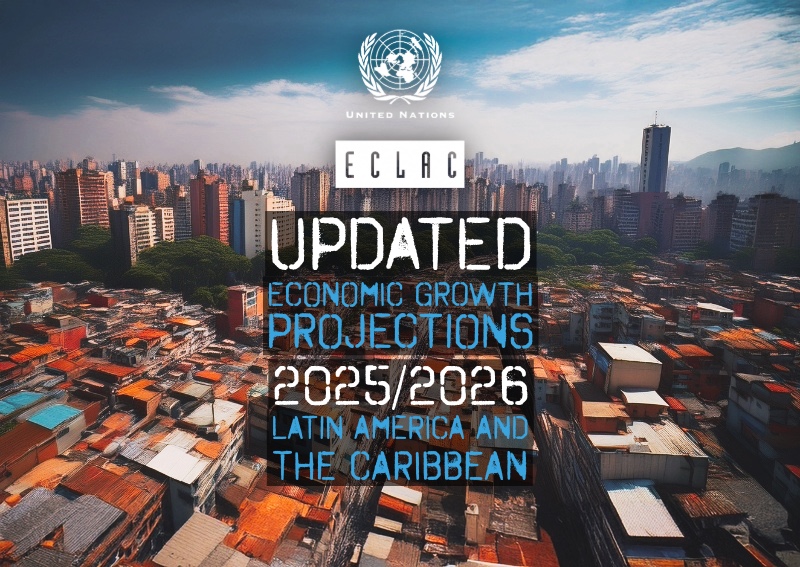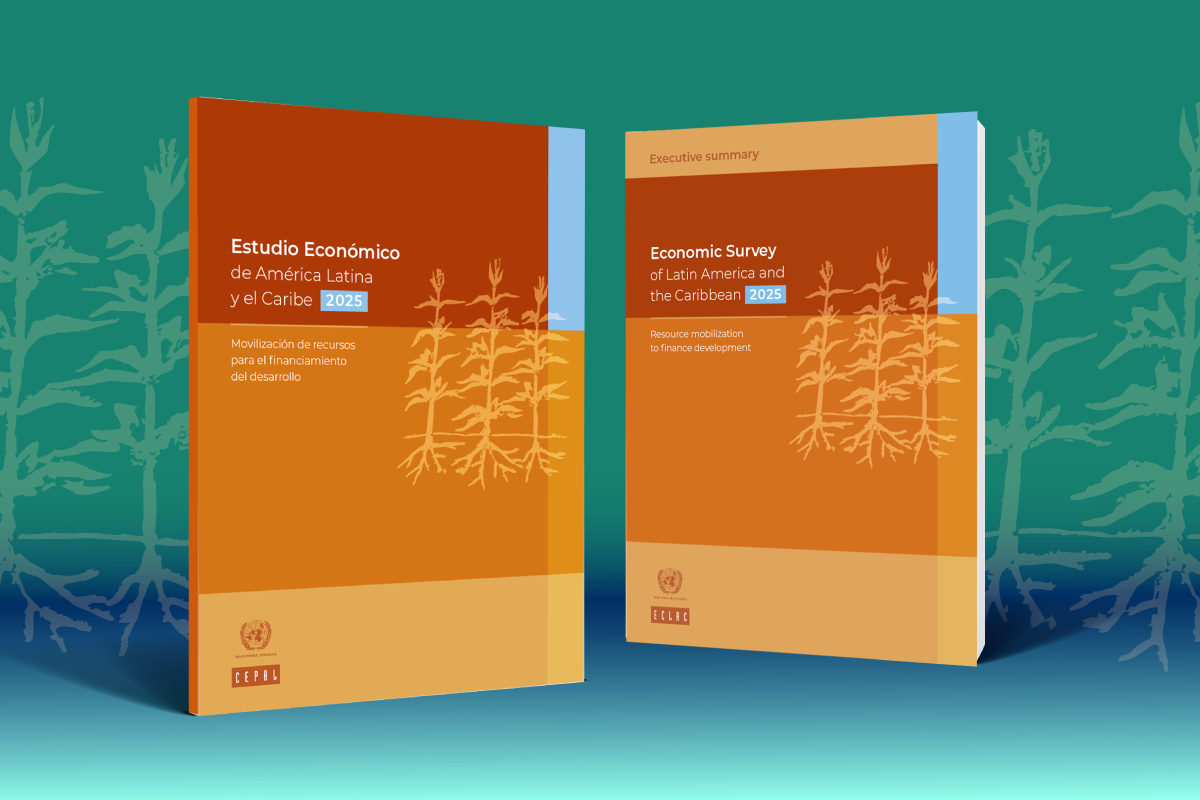ECLAC Updates Growth Projections for Latin America and the Caribbean: An Expansion of 2.4% is Expected in 2025 and 2.3% in 2026
Work area(s)
The region continues to be mired in a trap of low capacity for growth, with average rates of around 2%, with scant investment, low productivity, sluggish labor markets and high inequality levels.

The Economic Commission for Latin America and the Caribbean (ECLAC) updated its growth projections for the region, estimating that Gross Domestic Product (GDP) will rise 2.4% in 2025 and 2.3% in 2026. The new estimate for 2025 represents an upward revision from the 2.2% forecast in the Economic Survey of Latin America and the Caribbean 2025, published on August 5. This is the second upward revision since April, when the outlook for regional growth was 2.0%. With this update, the expectation for regional growth is identical to the figure presented in December 2024 (2.4%).
In a press release, the United Nations regional organization indicates that this adjustment to the projections reflects a less adverse international environment than what was foreseen in April, but it does not change the underlying diagnosis: the external drivers of growth have decelerated and the region continues to grow at a slow pace. To break out of this situation, a more accelerated productive transformation is needed to fuel economic growth and productivity, diversify economies, and create more and better jobs.
An adverse global environment that continues to condition prospects for growth
The revisions to the 2025 projections reflect changes in the external conditions faced by the region. These include modifications in the scenarios for international trade growth due to the effects of the tariff announcements made by the United States since April of this year, as well as adjustments in the growth prospects of the region’s main trading partners – the pace of which, while decelerating versus 2024, has improved in comparison with the estimates from the start of the year. In addition to these factors, inflation expectations at a global level have declined at a slower-than-expected speed, affecting interest rate reductions by the main central banks and the dollar’s trajectory in international markets.
Although the international context has been the main conditioning factor in the current year, ECLAC emphasizes that domestic determinants – such as the reduced space available for fiscal and monetary policies, productive specialization and the destination of exports – also account for the differences in the performance of the region’s economies.
Performances differentiated by subregion
The current projections point to heterogeneous behavior among subregions. In 2025, South America is seen growing by 2.9%, above the 2.7% forecast in August. This rise reflects an increase in trade between the subregion’s countries and China and a rebound in the prices for precious metals and other products from extractive sectors.
The GDP growth estimate for Central America is not seen varying from the figure announced in August, holding steady at 2.6%. Meanwhile, Mexico’s GDP is seen growing by 0.6%, an upward revision of 0.3 percentage points versus the estimate presented in the Economic Survey, reflecting a more favorable result in terms of international trade and a better-than-anticipated performance by the United States economy. The English- and Dutch-speaking Caribbean is forecast to grow by 4.7%, or 1.9% if Guyana is excluded, versus 4.1% and 1.8% in August, respectively, driven by a more favorable-than-expected result in the tourism sector.
For 2026, ECLAC has kept its regional projection unchanged at 2.3%. If this estimate is borne out, it would be the fourth straight year in which the region grows at rates of around 2.3%, leading to average regional GDP growth of 1.6% for the 2017-2026 period. By subregion, 2026 growth rates are forecast at 2.4% for South America, 3.2% for Central America, 1.3% for Mexico and 8.2% for the Caribbean (1.7% if Guyana is excluded).
Labor market: less dynamism and remaining gaps
The region’s moderate economic performance will be reflected in the labor market’s limited dynamism. ECLAC projects that the number of employed persons will increase by 1.5% in 2025 and 1.2% in 2026, with a slowdown in formal employment creation. Although a slight reduction in labor informality and gender gaps is foreseen, both indicators are seen remaining at high levels, which points to the structural challenges of regional labor markets.
Uncertain environment and call to action
ECLAC warns that the international outlook continues to be dominated by downward risks, including the possibility of abrupt corrections in international financial markets, pressures on fiscal sustainability in advanced economies, and possible additional trade disruptions – tensions that could affect the credibility of monetary policies in the world’s main central banks and interest rate levels.
Given this scenario, ECLAC urges the region’s countries to preserve macroeconomic stability, strengthen their fiscal and monetary institutions, and promote productive development policies aimed at increasing productivity, diversifying exports, boosting intraregional trade and fostering sustainable investment. In addition, it reiterates that international cooperation and multilateralism are essential for sustaining the recovery and mitigating the effects of geoeconomic fragmentation.
In December, ECLAC will publish its flagship report Preliminary Overview of the Economies of Latin America and the Caribbean 2025, in which it will offer a detailed analysis of the year’s results along with new perspectives for 2026. The full projections can be consulted in the press release published at www.cepal.org.
Attachment(s)
Related content

Latin America and the Caribbean Endures a Prolonged Period of Low Growth: It Will Grow 2.2% in 2025 and 2.3% in 2026
Today ECLAC presented a new edition of its Economic Survey of Latin America and the Caribbean 2025, in which it stresses the region’s urgent…
Country(ies)
- Latin America and the Caribbean
Contact
Public Information Unit
- prensa@cepal.org
- (56 2) 2210 2040